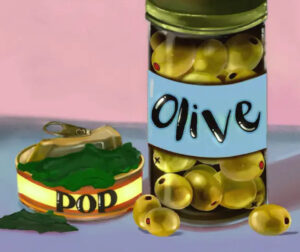Art has long held a fascinating place in human culture, capturing history, emotions, and even the intangible aspects of the human condition through various mediums. The great masters of the Renaissance, such as Leonardo da Vinci, Michelangelo, and Albrecht Dürer, represent the pinnacle of artistic achievement, their works treasured by museums, collectors, and connoisseurs. It is extraordinary, then, to hear the story of a seemingly lost masterpiece—Dürer’s renowned “Knight, Death, and the Devil”—rescued from a dump by an 11-year-old boy. This unbelievable turn of events raises questions about the fragility of history, the role of serendipity in preserving art, and the enduring impact of Dürer’s work on modern culture.
A Boy’s Chance Encounter With a 500-Year-Old Masterpiece
The idea of a child stumbling upon a 500-year-old artwork in a garbage heap seems almost too far-fetched to believe, and yet this is precisely what happened. The boy in question discovered the artwork among other discarded items, likely unaware of its historical and cultural significance at first. But something about the piece intrigued him enough to save it from oblivion. That decision, seemingly small at the time, has turned out to be one of immense importance to the art world. After experts confirmed that the artwork was indeed an original engraving by Albrecht Dürer, a newfound appreciation for both the art and its rescuer began to spread.
“Knight, Death, and the Devil” is one of the most iconic works by Dürer, a German artist considered one of the most influential figures of the Northern Renaissance. Created in 1513, the engraving depicts a stoic knight on horseback, flanked by two foreboding figures—Death, holding an hourglass, and the Devil, depicted as a grotesque creature lurking behind. The scene is both macabre and heroic, symbolizing the moral fortitude required to face the trials of life, death, and temptation.
The Importance of *Knight, Death, and the Devil
To fully understand the significance of this discovery, one must first appreciate the context in which Dürer created “Knight, Death, and the Devil”. The early 16th century was a time of great religious and philosophical upheaval in Europe, marked by the Reformation, the rise of humanism, and a renewed interest in classical antiquity. Dürer, like many of his contemporaries, was deeply influenced by these cultural shifts. His work often reflects the tension between spiritual and earthly concerns, and “Knight, Death, and the Devil” is no exception.
The engraving is one of three in a series known as Dürer’s “Meisterstiche” (Master Engravings), the others being “Melencolia I” and “Saint Jerome in His Study”. Together, these works represent Dürer’s exploration of the human condition, with each engraving offering a different perspective on the trials and tribulations of life. While “Melencolia I” delves into the melancholic temperament of the intellectual and “Saint Jerome in His Study” focuses on scholarly devotion, “Knight, Death, and the Devil” represents the active life, where courage and moral resolve are paramount.
The knight in the engraving, clad in armor and riding resolutely through a treacherous landscape, is often interpreted as a symbol of Christian virtue, unwavering in the face of death and temptation. Death holds an hourglass, reminding the knight—and the viewer—that time is fleeting, while the Devil represents the ever-present threat of sin and corruption. The knight’s steadfast gaze, however, suggests that he is undeterred, choosing to continue his journey despite the dangers surrounding him.
A Journey Through Time: How Dürer’s Work Endures
What makes this discovery so compelling is not just the fact that the artwork survived for over five centuries, but that it did so in such an unexpected way. The survival of “Knight, Death, and the Devil” speaks to the enduring power of art to transcend time, place, and circumstance. Dürer’s engravings, which were originally printed using metal plates and specialized tools, have long been prized for their intricate detail and technical precision. Despite the technological advances in art production since the 16th century, few artists have been able to replicate the level of mastery that Dürer achieved.
The discovery also raises questions about how such a valuable piece of art could have ended up in a dump in the first place. Was it the result of ignorance, where the previous owner had no idea of the engraving’s worth? Or was it part of a larger narrative of artworks being lost, forgotten, or discarded over the centuries, only to be rediscovered by chance? Regardless of how it ended up in the trash, the boy’s intuition to save it demonstrates how even the most unassuming individuals can play a crucial role in preserving cultural heritage.
In many ways, this story mirrors the themes of the artwork itself. Just as the knight in “Knight, Death, and the Devil” presses forward in the face of adversity, so too has this engraving survived the ravages of time and neglect. It is a testament to the resilience of both the artwork and the artist, whose influence continues to resonate in the modern world.
Dürer’s Influence on Contemporary Art and Culture
Albrecht Dürer’s work has left an indelible mark on the world of art, not only for his technical skill but also for his ability to capture the complex human experience. His engravings, including “Knight, Death, and the Devil”, have inspired countless artists, writers, and thinkers over the centuries. The symbolic richness of his work invites multiple interpretations, allowing each generation to find new meaning in his depictions of life, death, and morality.
In contemporary culture, Dürer’s influence can be seen in various forms of media, from fine art to graphic design, fashion, and even film. His meticulous attention to detail and use of symbolism have become touchstones for artists seeking to blend technical mastery with deeper philosophical questions. Moreover, the themes explored in “Knight, Death, and the Devil”—courage in the face of adversity, the inevitability of death, and the temptations of worldly power—are as relevant today as they were in the 16th century.
The recent rediscovery of this engraving also serves as a reminder of the importance of art preservation. In an age where digital media often dominates, it can be easy to overlook the value of physical works of art, particularly those that are centuries old. Yet, as this story shows, the tangible nature of Dürer’s engraving—its texture, weight, and physical presence—adds to its historical and emotional significance.
A Lesson in Serendipity and the Endurance of Art
The remarkable story of an 11-year-old boy rescuing a Renaissance masterpiece from the dump is more than just a lucky find—it is a reflection of the timelessness of art and its ability to inspire, even in the most unexpected circumstances. “Knight, Death, and the Devil” continues to captivate audiences, not just for its technical brilliance but for the moral and philosophical questions it raises.
Dürer’s legacy endures, and this discovery reinforces the importance of preserving and appreciating art in all its forms. It also serves as a reminder that the guardians of culture can come from anywhere, and that sometimes, it is the unlikeliest individuals who play a crucial role in ensuring that the treasures of the past continue to inspire future generations.
No comments yet.







